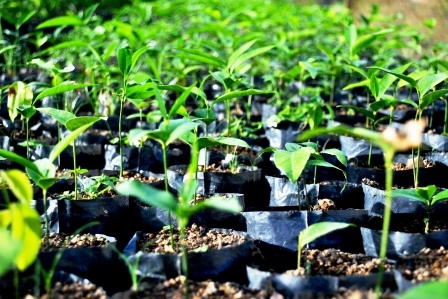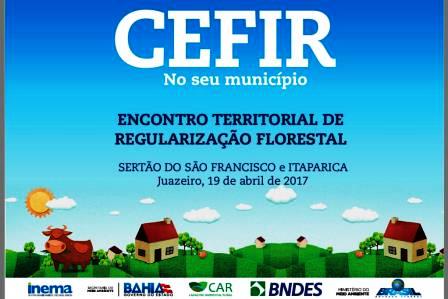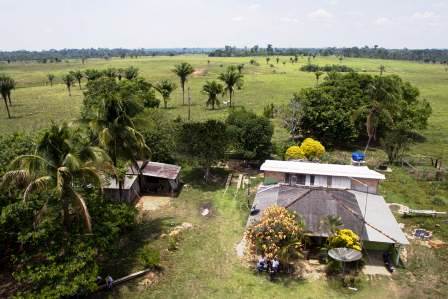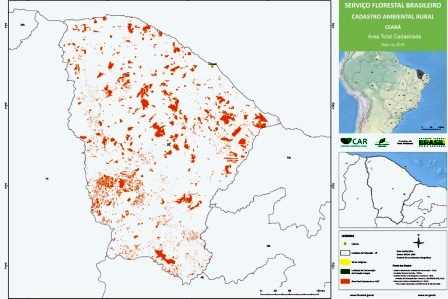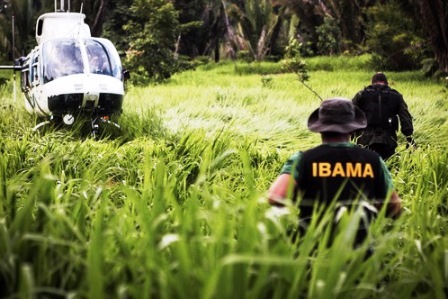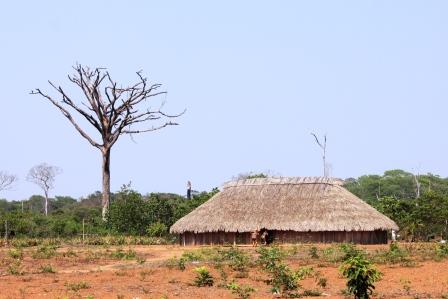ACTIVITIES CONDUCTED
Below are some of the activities carried out by the project. In the agricultural component, aiming to promote productive diversification and the generation of sustainable economic alternatives, eleven areas of SAFs were implemented, which integrate the simultaneous cultivation of agricultural crops and forest species and 60 farmers were trained for the management of these systems.
Four workshops were held for 33 livestock farmers in order to guide the implementation of Voisin Rational Grazing technology¹ and disseminate agroecological management practices of pasture areas, reducing the need to open new areas for this activity. The project carried out more than 160 technical assistance activities with farmers and livestock farmers in management practices.
Also in the agricultural component, the production of fruit pulps was strengthened, through the acquisition of equipment that was installed in a fruit processing unit (Fruit Pulp House), including freezers for cooling and conditioning of production, as well as training workshops for farmers and the provision of technical advice on this topic.
In the community timber forest management component, technicians and handlers were trained and technical advice was provided for timber management, as well as equipment was acquired and meetings were held for the commercialization of timber production.
Studies on the dynamics of tropical forests were also carried out, with forest inventories and monitoring of the number of individuals and forest species in the Mamirauá SDR, as well as research in Ecology of Germination and Ecological Restoration, aimed at providing information for the construction of germination protocols, seed storage and ecological restoration models, until then nonexistent in this forest typology.
In the non-timber forest management component, four workshops were held on oilseed management, totaling 86 trained individuals. Research aimed at developing local ecological knowledge on the species of andiroba and copaíba, on the productivity of andirobeiras and copaibeiras, and on the commercial aspects of the products of these species.
A solar-powered andiroba oil extraction machine was also installed. Aiming to strengthen the andiroba production chain and product diversification, a candle production machine was acquired with the lees from the mass of andiroba seeds (which is the leftover after oil collection) and a workshop of good production practices and marketing of andiroba products and by-products was held.
In the environmental education component, young people and children were involved in the experimentation activity to recompose forest areas. Training workshops were held with teachers in the Amanã and Mamirauá SDRs and 300 seedlings were planted produced from the playful activities developed in the context of the project.
Activities were also carried out with forest managers, such as meetings, participatory mapping and seed collection. Also in the theme of education and training, workshops were held on various topics, such as natural resource management, income generation, leadership training and strengthening of community organizations. Finally, handbooks and a guide to participatory tools were prepared and published, as well as works related to environmental education.
In the environmental protection component, five inspection missions were carried out, with the participation of public environmental inspection agencies, which mainly covered areas of the Mamirauá, Amanã and surrounding SDR, covering a total of approximately 3,900 km. In these inspection missions, more than 25 tons of illegal fish, about 600 kg of game meat and fifteen whole animals were seized, as well as various equipment and 10 vessels. A total of 438 vessels were inspected and fines were imposed, totaling about R$1.3 million.
Still in the environmental protection component, training workshops for Voluntary Environmental Agents (AAV) were held, with 298 individuals trained as AAVs. With this action, in addition to the environmental education described above, the activities to protect the SDRs have spread in the communities.
In the monitoring component, areas were monitored in the field and by satellite images. By remote sensing, about 6,800 hectares of converted (deforested) areas were identified and mapped. Field monitoring covered 193 hectares, and maps were made identifying the communities that develop agricultural activity. At the end of the project, a remote and field monitoring system was consolidated that allows the monitoring of the areas used for agricultural activity in SDR Amanã.
Documents and videos were produced by the project, including a bilingual book (Portuguese and English) entitled “Protagonists: conservation reports from the western Amazon”. Part of these documents and videos, including the book mentioned, can be accessed on the page dedicated to this project on the Amazon Fund website², where various information on all projects supported with Amazon Fund resources can be consulted, both projects in progress and completed projects.



